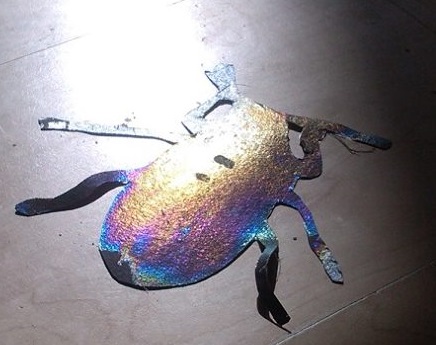Nanoscience
Iridescence what's going on?
Iridescence describes the ability of an object to appear to be different colours from different angles. This phenomena is caused by more than one reflection from multiple semi-transparent surfaces. This process is seen in the natural world in various species of beetle. It can also be witnessed in soap bubbles and oil slicks, especially oil slicks in puddles. The surface colour appears to change depending upon the way the light falls on the object giving a shimmering effect. A similar effect occurs with diffraction in compact discs, allowing a rainbow of colours to be observed depending upon the way that light falls upon it.
Many butterflies have wings with scales which interact with light in this way. The cuticle is made up of microscopic structures of air and chitin. This means that unlike pigment, the reflection of light is interfered with so certain colours are cancelled out while others are reflected.
Here is an experiment which allows you to create your own iridescent beetle or butterfly.
Equipment
You
will need
1. Black card or strong, black paper
2. A plastic tub to hold water
3. Water (Run a depth of about 1-2cm into your plastic tub)
4. Scissors
5. Clear nail varnish
6. White paper and printer (optional)
7. Pencil or pen which can be seen on black paper e.g. white, silver, gold
Method
1. Print out your beetle and or butterfly onto white paper to make a template. Carefully cut around the template and place it onto the black card or paper and draw around the shapes. Alternatively draw your own design directly onto the black card or paper and cut it out.
2. Place your black beetle or butterfly into the tub of water and make sure that it is completely submerged.
3. Pour a drop of clear, nail varnish into the water.
4. Carefully lift your beetle or butterfly out of the water, allowing the film, which has formed, to cover the shape.
5. Leave to dry for about twenty minutes.
Results
Your beetle or butterfly should be covered on one side with a thin film which iridesces as you move it

Thin films iridesce in this way because they are so fine. They are only a few hundred nanometres thick in total. A nanometre is a billionth of a metre. This means it's in the same size range as visible light.
This kind of technology has uses in anti-counterfeiting measures. Have a look at bank notes to see it in action.